Zotac ZBOX MAGNUS EN1080 SFF PC Review: A Premium Gaming Powerhouse
by Ganesh T S on December 19, 2016 8:30 AM ESTPower Consumption and Thermal Performance
The power consumption at the wall was measured with a 1080p display being driven through the HDMI port. In the graphs below, we compare the idle and load power of the Zotac ZBOX MAGNUS EN1080 with other gaming mini-PCs evaluated before. For load power consumption, we ran our own custom stress test (Prime95 and FurMark) as well as the AIDA64 System Stability Test with various stress components, and noted the maximum sustained power consumption at the wall.


The usage of a NVMe SSD (as compared to a SATA SSD) and changes in the board design can probably explain the slightly higher idling power consumption of the EN1080 as compared to the EN980. The more surprising result is the maximum sustained power consumption. It turned out to be actually lower than that of the EN980. We repeated the tests with multiple configurations of FurMark, but we were not able to get the system to consume as much power as the EN980. Given that the GPU is a major component of the load power consumption, this points to the increased power efficiency of the GTX 1080 for the same workload when compared to the GTX 980.
Our thermal stress routine starts with the system at idle, followed by four stages of different system loading profiles using the AIDA64 System Stability Test (each of 30 minutes duration). In the first stage, we stress the CPU, caches and RAM. In the second stage, we add the GPU to the above list. In the third stage, we stress the GPU standalone. In the final stage, we stress all the system components (including the disks). Beyond this, we leave the unit idle in order to determine how quickly the various temperatures in the system can come back to normal idling range. The various clocks, temperatures and power consumption numbers for the system during the above routine are presented in the graphs below.
We repeated the same observations with our legacy stress test using the latest versions of Prime95 and Furmark.
The CPU and GPU idle at less than 30 C, which shows the excellent nature of the thermal solution. However, the SSD idles at around 60 C. Given that there is no thermal protection at all other than a little bit of airflow, it is not surprising to find that the M.2 NVMe SSD is unable to keep a cooler profile.


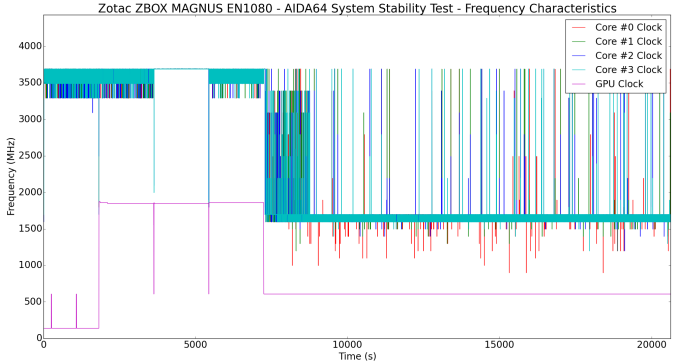
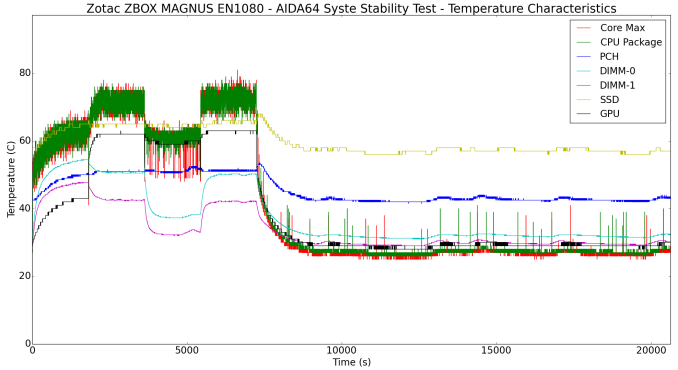

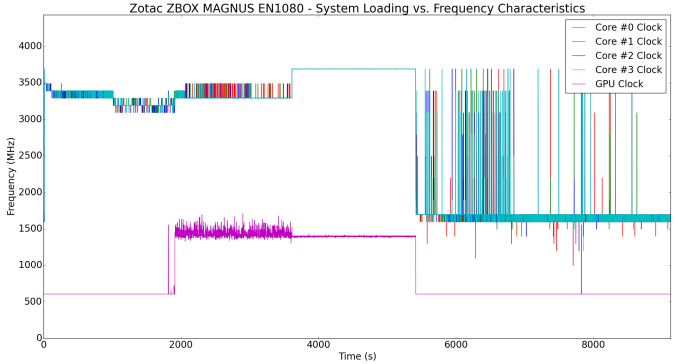
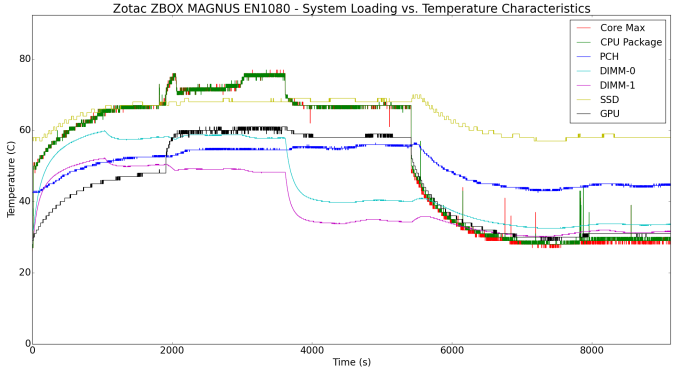
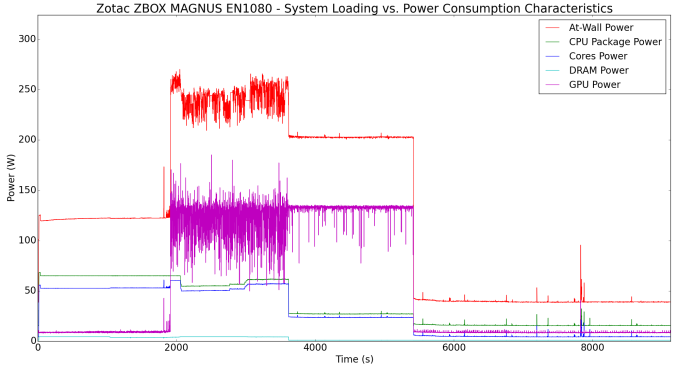








38 Comments
View All Comments
Michael Bay - Monday, December 19, 2016 - link
There was a nice trend of posting size comparison pics with a can of soda and a cig pack.I really wish it came back.
BrokenCrayons - Monday, December 19, 2016 - link
I want to oogle Ganesh's cans via review photos. :DOooh! Maybe we should start a GoFundMe to soak up the cost of purchasing a can so there's no out-of-pocket expense. If we pull it off, it might be possible for the readers to get a look at everyone's cans.
cm2187 - Tuesday, December 20, 2016 - link
Unfortunately a can of coke is not an international measure:https://en.wikipedia.org/wiki/Beverage_can#Standar...
Renagade - Wednesday, December 21, 2016 - link
how bout a tape measure, ruler, yard stick - something - perhaps with both metric and american markings? This way - EVERYONE wins and the international measure standards are coveredK_Space - Monday, December 19, 2016 - link
I think those belonged to either Ian or Brandon (the cola can I think).... No one else got em!¬_¬
cknobman - Monday, December 19, 2016 - link
Cool system but IMO since a GTX 1080 is not quite enough for full blown 4k gaming then why waste all that money getting it.The best buy is the ZOTAC ZBOX MAGNUS EN1070 Gaming Mini PC, Intel Skylake Core i5-6400T which only costs $1200.
GTX 1070 is powerful enough to handle anything 2k and below which is all you could really do comfortably with the 1080 version so most of that extra $800 would be going to waste.
https://www.amazon.com/dp/B01M3062Z5/ref=psdc_1389...
TheinsanegamerN - Monday, December 19, 2016 - link
It isnt enough for 4k, but it is enough for 1440p, or for 1080p for years from now. You could buy this with the knowledge that, at 1080p, say with a g sync monitor, you would not need to replace it for 5+ years.also, the 1070 is not enough to consistently max out 1440p, or do 1400p or 1080p consistent at 144 hz refresh rates. the 1080 isnt quite enough either, but its a heck of a lot closer.
cknobman - Monday, December 19, 2016 - link
LOL no card can max out 1440 @144hz consistently (you even put it in your own post) so why waste $800 getting a 1080 when a 1070 is enough to get 60+fps in 1440 everywhere and will do any game @1080p (even lesser cards than that are more than enough for 1080)?Again IMO save $800 and get the 1070 config.
zenonu - Monday, December 19, 2016 - link
My Titan X (P) hits 1440p 144Hz in a significant amount of games. The 1080 doesn't need to hit 1440p 144Hz consistently either to provide a significant amount of value from between 60Hz and 144Hz. There is a place for this product, and your own financial valuation of this product is generally only relevant to you.LordanSS - Monday, December 19, 2016 - link
1080p60 with SuperSampling. There.